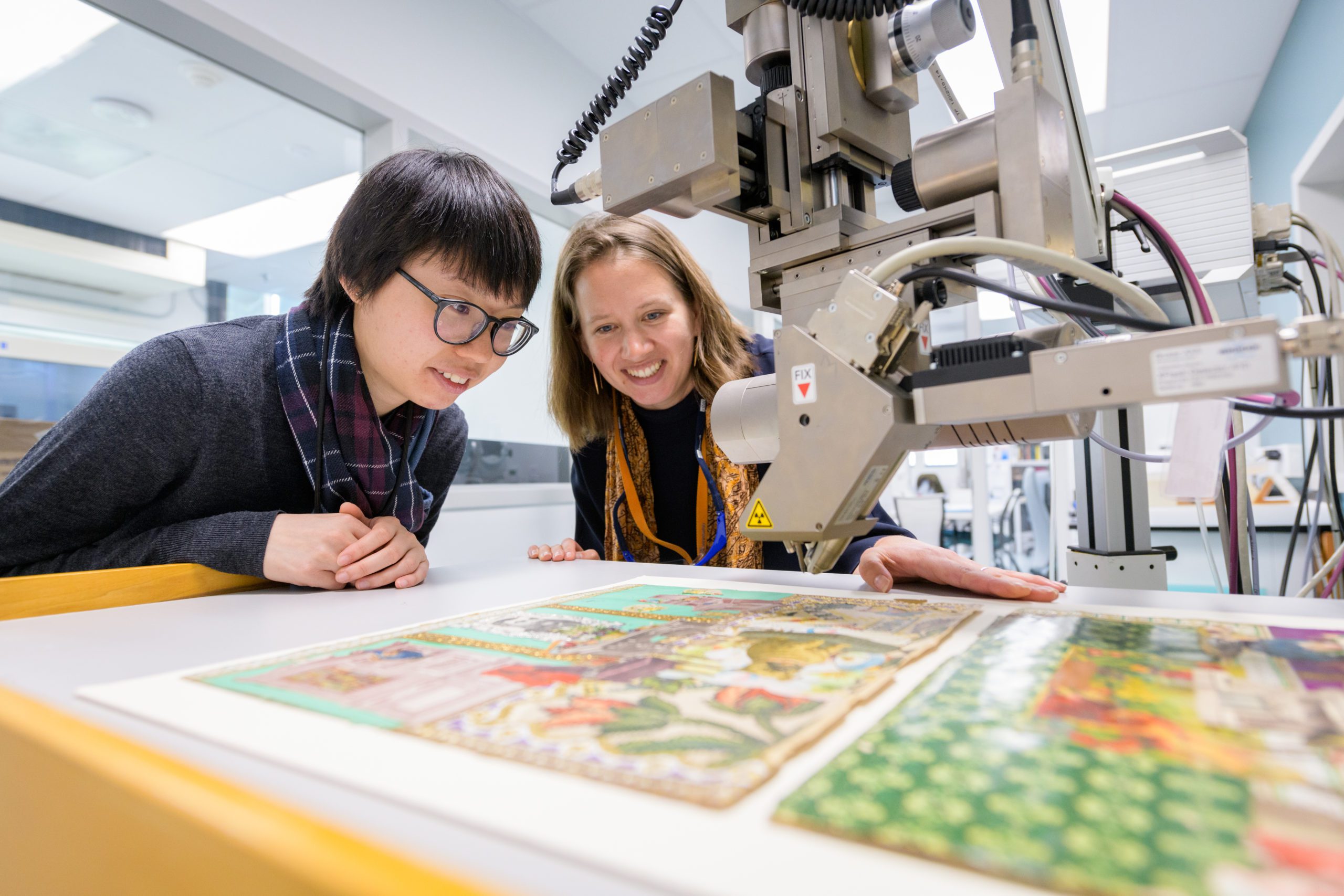
Image Caption: Dr. Rosie Grayburn (right) and graduate student Yan Ling Choi examine the elemental composition of the pigments on “Helen’s Scrapbook House” using non-destructive X-ray fluorescence analysis.
Winterthur’s state-of-the-art Scientific Research & Analysis Laboratory is a research and teaching facility housed in the Department of Conservation. Scientific analysis of objects is carried out to answer questions about their condition, technology of manufacture, and history. Answers to these questions are critical for formulating appropriate conservation treatments.
One of only 18 similar museum labs in the country, the SRAL is equipped with instruments for materials characterization, with a focus on elemental and molecular analysis of cultural heritage materials. The laboratory also has portable equipment that can be used for scientific investigations in the Winterthur Museum and other heritage collections. Many types of analysis can be done non-destructively without taking a sample. In other cases, technology has advanced so that only a tiny sample is necessary.
The laboratory employs two conservation scientists who work closely with Winterthur curators and conservators, academic staff at the University of Delaware, Winterthur research fellows, research students, and students in the University of Delaware doctoral Program in Preservation Studies, the Winterthur/University of Delaware Program in Art Conservation, and Winterthur Program in American Material Culture. Amazing volunteers with extensive backgrounds in science aid in the work of the lab. The lab staff also teaches concepts about the interface of art and science to museum visitors of all ages.